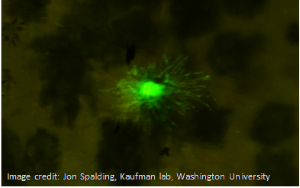
BMC Biology is calling for submissions on the topic of stem cells and cancer, that explores the intricate relationship between stem cell and cancer biology. In particular, we welcome studies providing new insights on the characterization and regulation of cancer stem cells, the role of stem and progenitor cells of the niche in the propagation of the tumor, and the role of reprogramming in this context, as well as potential therapeutic strategies based on reprogramming or targeting of various stem and progenitor cells. Moreover, studies describing the use of induced pluripotent stem cells for cancer modeling and as a drug discovery platform will be considered, as well as studies on the use of stem cells homing to deliver targeted therapy to tumors.
Articles describing basic biology or translational research are welcome. We encourage novel approaches or applications of existing protocols to explore the stem properties of cancer cells (e.g., single-cell approaches for lineage tracing, computational methods to track tumor cell evolution, leveraging model organisms of development to gain insights into human disease) in vivo and in vitro. Please note that studies based on analysis of existing datasets (e.g., TCGA or scRNA-seq) that lack substantial experimental validation are discouraged.
Potential topics of interest include, but are not limited to:
- Stem and progenitor cells of the tumor microenvironment
- In situ reprogramming of cancer stem cells
- Cancer stem cell plasticity and tumor heterogeneity
- Stem/progenitor populations and their differentiated descendants in normal development, providing insights into the diverse cell identities within a tumor
- Cell/molecular basis of potential treatments for cancer, via targeting various types of stem and progenitor cells.
- Biomarkers and imaging techniques for detecting cancer stem cells
- Using induced pluripotent stem cells and organoid cultures for cancer modeling and as a drug discovery platform
Image credit: Jon Spalding, PhD in Kaufman Lab, Washington University, St. Louis, MO, USA
Image legend: Live fluorescent image of skin from a zebrafish with an initiating melanoma cell expressing EGFP driven by a neural-crest stem cell promoter (green spindly cell, seen among other melanocytes, which are black due to the presence of melanin)
BMC Biology called for submissions to our Collection on Stem cells and cancer. This Collection aimed to explore the intricate relationship between stem-cell and cancer biology.